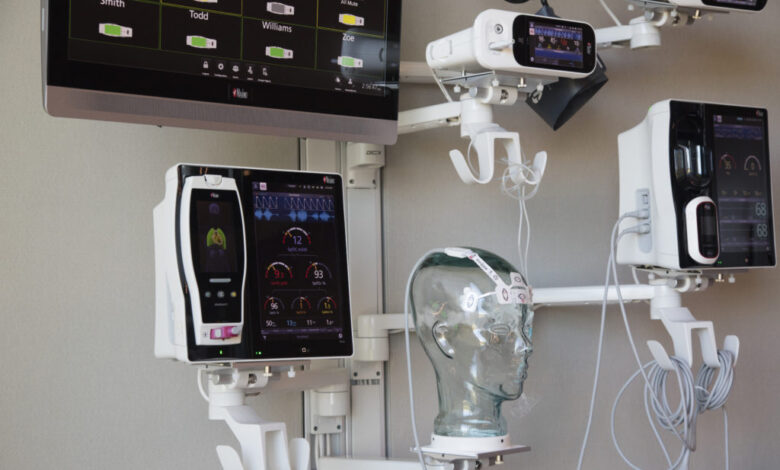Avoiding Design Fatigue with Joe Kiani: Why Patients Stop Using Health Tools and How to Fix It

Even the most promising health technologies can fall short if users simply stop using them. As preventive health tools become more common, so do reports of user fatigue, frustration and disengagement. Understanding the causes of this drop-off and designing ways to prevent it has become a crucial priority. Joe Kiani, Masimo founder, recognizes that user experience is key to long-term engagement. Health tools must remain supportive and sustainable over time. When technology respects users’ time, attention, and evolving needs, it is more likely to integrate seamlessly into their daily routines.
Preventing drop-offs requires a shift in perspective, one that prioritizes empathy and flexibility. By designing tools that adapt to users’ lives, accommodate missed steps and provide gentle re-entry points, health technologies can reduce feelings of guilt and encourage ongoing use. Building resilience into the user experience helps ensure that preventive care tools remain part of everyday life rather than fading into the background.
The Causes of Design Fatigue
Design fatigue often sets in when a health app or device feels repetitive, cluttered or demanding. Over time, constant notifications, complex dashboards, or unintuitive features can turn an initially helpful tool into a chore.
In prevention-focused care, where daily habits are key, these moments of friction accumulate. A missed notification here, a confusing interface there and soon, the user disengages. Design that anticipates and removes these small obstacles can be the difference between a short trial and a lasting commitment.
See also: Social Security Disability Benefits for Mental Health Conditions
Over-Personalization and Cognitive Overload
While personalization is a key component of effective digital health tools, too much customization can lead to cognitive overload. When users find themselves constantly adjusting settings, managing preferences or navigating complex workflows, the app can start to feel more like a burden than a support. Similarly, tools that present an overwhelming number of data points without clear guidance can leave users feeling lost rather than informed.
To avoid this, it’s crucial to prioritize simplicity and clarity. Rather than overwhelming users with excessive options or raw data, the focus should be on surfacing the most relevant information in a way that is easy to understand and act upon. Joe Kiani Masimo founder explains, “It’s not just about collecting data. It’s about delivering insights that empower people to make better decisions about their health.” He highlights the importance of not just gathering information but presenting it in a meaningful and digestible way.
By thoughtfully balancing personalization with simplicity, digital health tools can maintain user engagement while reducing frustration. Empowering users with clear, actionable insights fosters a sense of control and confidence, rather than leaving them feeling overwhelmed by too much information.
The Importance of Content Freshness
Repetitive content contributes to design fatigue. When prompts, tips or feedback loops never change, users may stop paying attention. Dynamic content, such as new suggestions, rotating challenges or updated visuals, helps keep the experience engaging.
Preventive health is a long-term effort. Keeping users interested requires updating the environment as they progress. It doesn’t mean adding complexity; it means offering variety within a familiar framework.
Simplifying Workflows
Long or tedious workflows are a major reason users drop off. Health tools should allow users to complete core tasks in seconds, not minutes. That includes logging activities, reviewing trends or adjusting preferences.
Automation also helps reduce fatigue. Features like auto-syncing with wearables, pre-filled fields or smart reminders reduce friction and save time. These details show respect for the user’s effort and improve long-term use.
When repetitive tasks are handled seamlessly in the background, users can focus more on their health and less on managing the tool. It creates a smoother, more intuitive experience that fits into daily life without demanding extra energy. Smart automation anticipates needs and eliminates unnecessary steps, making healthy choices feel easier and more natural. In the long run, this convenience plays a crucial role in maintaining engagement and reducing burnout.
Emotional Tone Matters
The tone of a health tool’s interface can influence whether users return. If messaging feels clinical, scolding or impersonal, users may disengage. Positive, encouraging language, even in small moments, can help maintain motivation.
Health is personal. UX that acknowledges progress, offers encouragement and avoids guilt is more likely to support sustained engagement. When users feel celebrated for their efforts, no matter how small, they’re more inclined to keep going.
Compassionate design respects individual pace and avoids shaming setbacks. It creates a space where users feel safe to try, learn and improve. Over time, this positive reinforcement fosters not only better health habits but a stronger emotional connection to the tool itself. In preventive care, that connection can be the key to long-term success.
Adaptation Over Time
People’s lives change, and so do their health needs. Tools that adapt, whether by adjusting goals, updating content or offering new features, are more likely to remain relevant. Static apps that assume users won’t grow or shift tend to fall out of use.
Health innovation underscores the value of responsive design. By listening to user feedback and evolving with real-life challenges, developers can keep tools aligned with users’ journeys. This ongoing responsiveness builds trust and shows users that their experiences matter. It also allows products to stay relevant as users’ needs shift over time, whether due to age, changing health goals, or new environmental factors.
Iterative design grounded in user insight leads to features that are not only functional but genuinely helpful. When users see updates that reflect their input, they feel like collaborators, not just consumers. In preventive health, this shared ownership can fuel stronger engagement and better outcomes.
How to Fix Design Fatigue
- Audit and simplify: Review your tool’s interface regularly for unnecessary steps or confusing layouts. Remove unnecessary elements that don’t serve a clear purpose.
- Refresh the experience: Introduce new visuals, messages or incentives over time to maintain interest.
- Prioritize the user’s time: Make every interaction purposeful and brief.
- Offer meaningful feedback: Make sure every alert or insight adds value.
- Check the tone: Review language for warmth, support and clarity.
- Listen and adjust: Build in ways to gather and act on user feedback.
Avoiding design fatigue isn’t about stripping tools down to the basics. It’s about finding the right balance between helpful and overwhelming, between supportive and prescriptive.
The idea is that health tech should fit into users’ lives, not disrupt them. When tools evolve thoughtfully, prioritize clarity and offer genuine value, they earn a place in people’s daily routines. That’s how prevention succeeds, not just through innovation but through design that respects and responds to real life.



